Text and photos: Anuradha Rajan
Aroad trip from Mumbai to Kanha National Park sounded daunting, but my family and I set out nevertheless, armed with suggestions, tips and tons of warnings. The distance is 1100-odd km and takes about nineteen hours by road. One can also do this trip by flying to Nagpur or taking the train and driving down to Kanha.
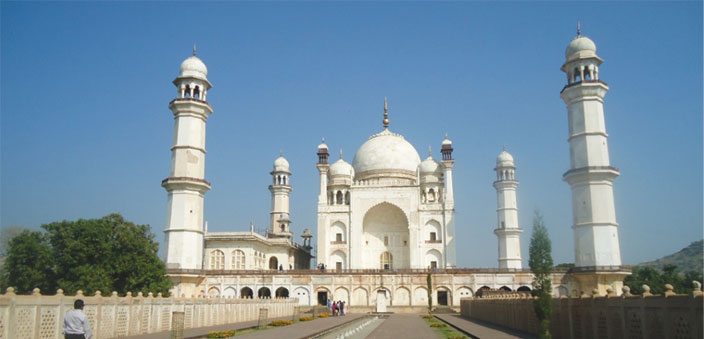
We as a family have done a lot of travelling southwards, since we hail from there. This was our first road journey eastwards and we didn’t know what to expect, especially the pit stops and the loo breaks. But the most important thing to remember is the presence of the sun. It seemed to be an omnipresent pain for the front seat passengers. Thankfully, it was December, so it wasn’t too hot.
The Dakkhani Taj and a crater enroute
Aurangabad was our first stop. We decided to conserve our energy and not do the Ajanta-Ellora rounds, which we had already done on a previous trip, but decided to have a quick look at the Bibi ka Maqbara – which I had always thought to be the Black Taj. This knowledge was also imparted to my kids who were looking forward to it and we were deeply disappointed when we realised that Bibi ka Maqbara is actually quite pale, and not black. I am not even sure now where I had got that information from!
Bibi ka Maqbara is a smaller, slimmer, paler version of the Taj Mahal – but a replica nevertheless. We spent some time at this monument, which despite the comparison to its more illustrious cousin, is still worthy of more than a dekko. Built by Azam Shah, son of Aurangzeb, this monument is also called the Dakkhani Taj (Taj of the Deccan) and was built by Azam Shah in memory of his mother Dilras Banu Begum. It is a very graceful monument and we were glad we had stopped awhile here.
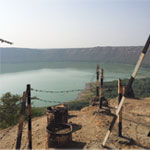
The whole place looked neglected and abandoned, with hardly any tourists. The guide told us proudly that the folks from NASA had visited the spot a couple of times. Trust American validation to fuel Indian patriotism. The lake itself has formed from an underground spring and there are no fish in it – only blue-green algae. I fail to understand why nobody is interested in marketing this site better. It is the world’s largest hyper velocity crater- created 50,000 years ago. Numerous temples surround the lake, most of which stand in ruins today, except for the temple of Daitya Sudan at the centre of the Lonar town, which was built in honour of Vishnu’s victory over the giant Lonasur. Vishnumandir, Wagh Mahadev, Mora Mahadev, Munglyacha Mandir and Goddess Kamalaja Devia are the other temples found inside the crater. Lonar has one MTDC hotel with some kind of lunch which is essential pit stop, as there is nothing else around for miles.
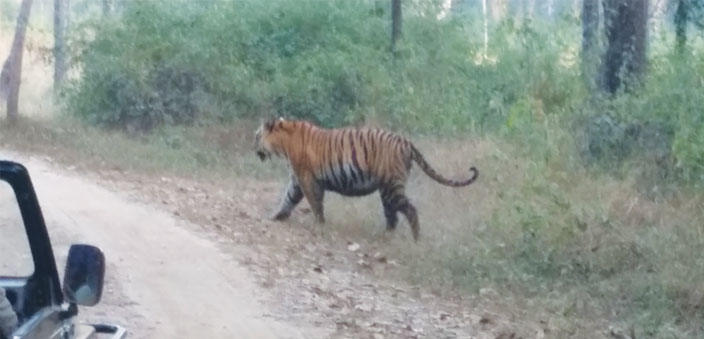
Kipling’s Kanha
Finally we reached Kanha late in the evening. With hardly any eating places on the way – it would be a good idea to pack some food for this leg of the journey. Kanha is beautiful and green and we stayed at the quaint Chitvan Jungle Resort. It has been ranked number one on trip advisor with glowing reviews. Half my family went for the morning safari huddled in jackets and monkey caps bought at the lodge and for extra protection the jeeps are loaded with blankets too. My son and husband were lucky to spot the tiger within fifteen minutes of their safari! Their thrill and excitement was palpable when they returned to the resort. The morning safari is of five hours duration and breakfast is served at the reserve. The afternoon safari is only three hours long. When we went in the evening there was no sign of a tiger. But the reserve itself is large and beautiful, with a lot of animals and birds populating it.
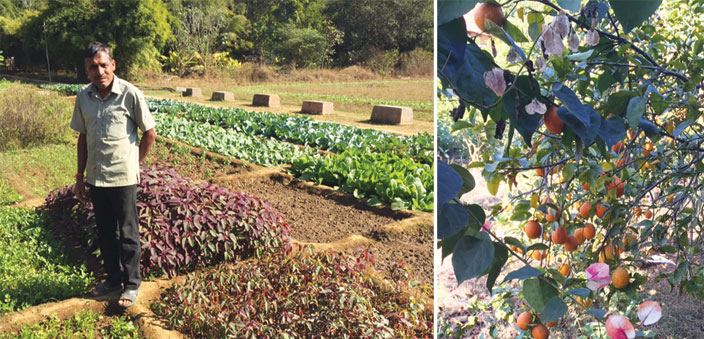
We felt sad leaving Kanha and heading towards the so-called civilised parts of the country. We took a longer route through Gondia to avoid the orange roads and stopped at Akola on the way. The hotels here are nothing great, but Nasik the next day was lovely. The drive from Nasik to Mumbai is very smooth through the beautiful Igatpuri. We reached Mumbai to one question asked by all and sundry, and some. “Did you see the tiger?” Even though I personally didn’t, I felt that the whole experience of being in the jungle, which boasts of about 90 plus tigers and varieties of birds, reptiles, and trees was awe inspiring and makes it difficult to fall in love with the jungle I have come home to (the concrete one). The only thought I now have in mind is that next time, I’m doing that morning safari for sure!

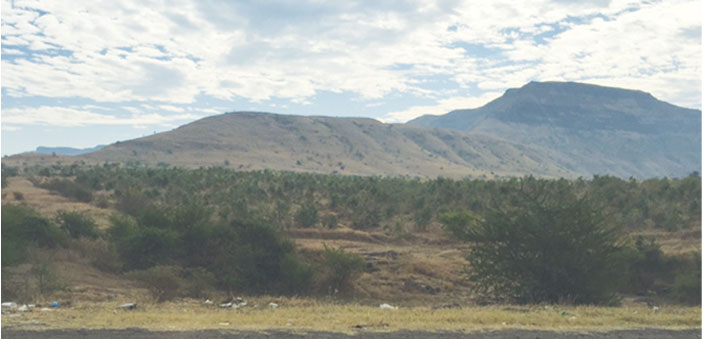
 [/column]
[/column]